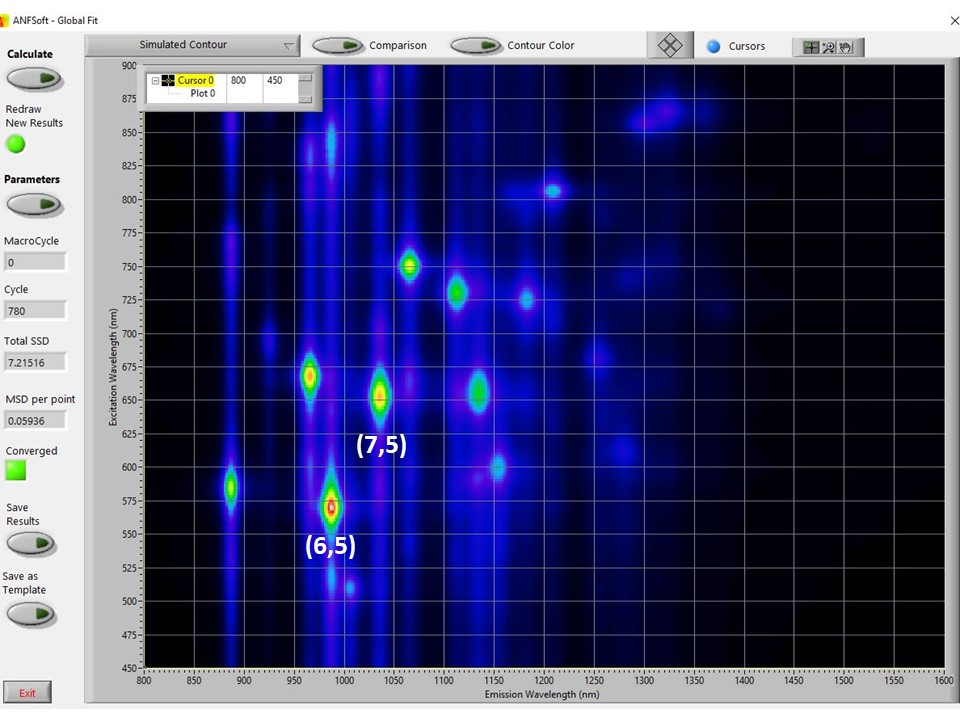Introduction to Single-Walled Carbon Nanotube Fluorescence Measurements
Single-walled carbon nanotubes (SWCNTs) have a graphitic structure in the form of a cylinder a single atom thick. These carbon cylinders can be formed with a variety of diameters and Multi-walled carbon nanotubes are composed of multiple concentric singlewalled carbon nanotubes. Short-wave or near-infrared fluorescence can be observed from a subset of single-walled and few-walled structures of carbon nanotubes.
|
End View |
Side View |
There are many different structures of single-walled carbon nanotubes. Each possible nanotube structure is labeled by two integers, (n, m), that uniquely define its diameter and chiral angle. Some nanotubes are metallic in electronic character, while others are semiconducting.
Metallic and Semiconducting nanotubes can be identified by their (n, m) designation.
Metallic nanotubes: the value n - m is evenly divisible by three
Semiconducting nanotubes: the value n - m is NOT evenly divisible by three.
Approximately 2/3rds of SWCNTs are semiconducting
The Semiconducting Nanotubes Fluoresce in the Near-Infrared!
Semiconducting and metallic nanotubes both absorb light in the visible region. The wavelength of visible light absorbed varies with each nanotube structure. Only semiconducting nanotubes will fluoresce in the near-infrared region. The wavelength of the near-infrared fluorescence emitted again varies with nanotube structure.

When we scan the visible excitation wavelength and capture the emission in the near-infrared we obtain a separate peak for each semiconducting (n, m) structure as shown in the contour plot below. In our NanoSpectralyzer systems, instead of scanning the entire visible absorption region we use 4 to 5 distinct laser excitation wavelengths and interpolate the regions in between using the latest scientific research data. This allows us to gather information about a SWCNT sample much more rapidly and also gives us access to data from more dilute samples that may be to dim to measure with the weaker lamp excitation typically used in scanning systems.

References: Band Gap Fluorescence from Individual Single-Walled Carbon Nanotubes, M. O'Connell et al., Science (2002) 297, 593, Structure-Assigned Optical Spectra of Single-Walled Carbon Nanotubes, S. M. Bachilo et al., Science (2002) 298, 2361, Dependence of Optical Transition Energies on Structure for SWCNT in Aqueous Suspension: An Empirical Katuaura Plot, R. B. Weisman and S. M. Bachilo, Nano Lett. (2003) 3, 1235




